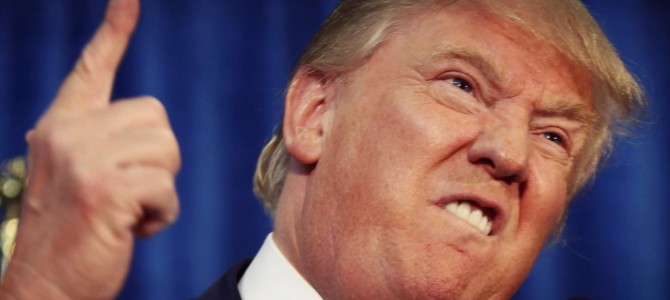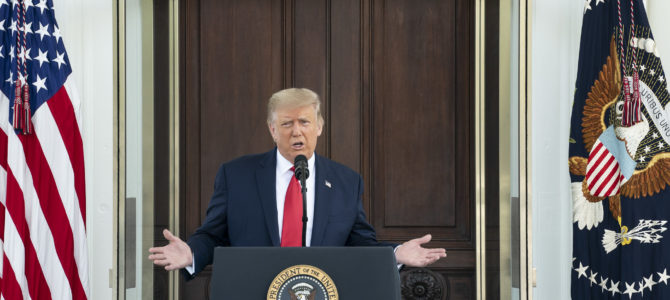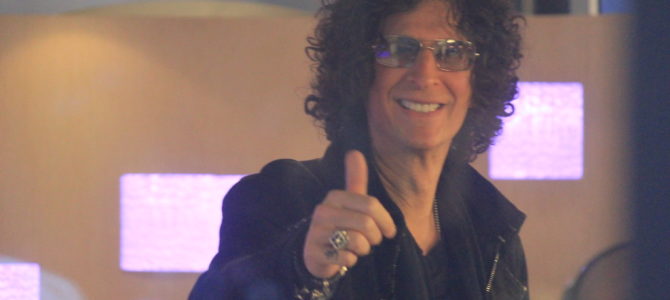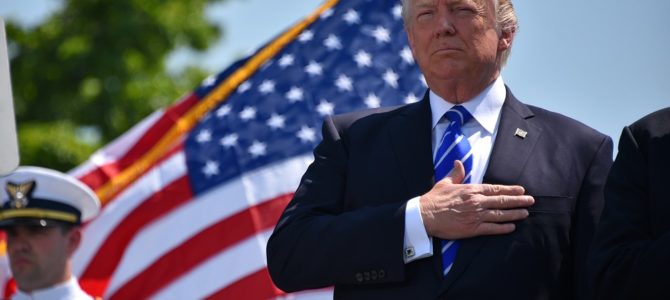
Despite pledging in September not to run a third-party campaign if he loses the Republican nomination, Donald Trump has spent a lot of time the past few months talking about doing just that. Are we surprised?
Three forces could prevent a third-party Trump run: (1) sore loser laws; (2) the election calendar and delegate math; and (3) Trump’s commitment to conservatism and his allegiance to the Buckley Rule.
Just kidding on that last one.
Keep in mind that any technicalities that could keep Trump from a third-party run would also bar Republican rivals from doing the same to challenge Trump should he become the nominee. And remember that forcing-function tactics that can appear shady coming from the party tend to roll right off Trump (he could “shoot someone” and his polling numbers wouldn’t go down).
Trump Obstacle 1: Sore Loser Laws
Forty-seven states have “sore loser” laws to stop a candidate who loses in a party’s primary from simply switching parties for the general election. Because these are state laws, there are 47 versions, with little uniformity. Some states merely prevent third-party bids, while others block write-in or independent candidates.
Most sore loser laws exempt presidential bids (as, arguably, they should). This means that while they may block independent or third-party runs at lower-office levels, they would not stop a presidential candidate like Trump from mounting an independent campaign.
Sore loser laws in a few states do include presidential races, including Michigan and mega-swing-state Ohio, where Trump has already filed as a Republican. Ohio Secretary of State Jon Husted has made crystal clear his intention to hold Trump to his Republican affiliation.
The Ohio law requires an independent presidential candidate in Ohio to disaffiliate from any political party “in good faith” during this election cycle. Between the lines, this discretionary “good faith” provision could allow Ohio the legal grounds to point to Trump’s Republican affiliation in other states as an indication that he has not met the good-faith disaffiliation requirement. So while a law in one state can’t dictate what a candidate can (or cannot) do in another, Ohio can consider Trump’s behavior elsewhere as grounds for how they will treat him in that state.
That same discretionary provision allows for some gray area in Ohio. Case law precedent has gone both ways, and state laws impacting federal elections can be vulnerable to constitutional challenges. Trump could attempt a lawsuit to overturn the Ohio sore loser law or exempt himself from it. It certainly would not be the first time Trump has sued to challenge something he disagrees with. Conventional wisdom would counsel a candidate not to cause an unpopular legal ruckus, but ruckus is working for Trump, so who knows.
The Ohio law also means March 15, the date of the Ohio primary, is probably the tipping point to watch for whether Trump will attempt third-party bids for the states that follow. Trump could win the nationwide Electoral College without Ohio, but it would be difficult. If Trump loses the Ohio primary, he may try to proceed without that state and file as a third party in subsequent states. The Ohio sore loser restriction has no bearing on what Trump can do anywhere else; each state is fair game depending on its particular laws.
Trump Obstacle 2: The Calendar
This brings us to the larger election cycle calendar. Candidates must meet deadlines in each state just to appear on the ballots. Each state requires a certain number of signatures by their respective deadlines to get on those ballots—nearly 600,000 petition signatures required in total nationwide.
Getting those signatures is expensive: upwards of $3 million for consultants and signature-gatherers, absent help from a party. The successful third-party candidates of the twentieth century have made it onto all 50 state ballots, but they have won few states. Here The Donald would have a dollar advantage, should he decide to simply write a check rather than spend time and capital fundraising to get those signatures.
Most states’ deadlines to submit those signatures fall in August or September, but deadlines start as early as May, when 80,000 signatures are due in Texas. This is another opportunity for a potential Trump lawsuit: state laws that apply to federal elections are always under greater constitutional scrutiny, especially a state law that could impact the larger nationwide interest in such a huge way.
It’s hard to predict what would happen if Trump were to challenge the early deadline states to push those deadlines back for him. Given his incredible polling numbers, compressed calendar, and seemingly bottomless funds, it’s hard to predict whether he’d struggle to meet those deadlines in the first place. He may not need the legal tantrum at all.
Trump could easily self-fund, but he hasn’t had to. He seeded his campaign with just $1.9 million, and has raised over $4 million from supporters. Most significantly, he’s had to spend hardly any of those dollars for pricey TV air time that’s so precious to his opponents.
In an election, money is publicity and time. Trump has so much of the first that the deadlines aren’t a problem for him (it’ll be later in the dull spots, when there isn’t a time crunch and he’s lost the element of surprise, that Trump may have to spend to maintain momentum).
Trump Obstacle 3: The Two-Party System
Campaign finance laws are another disincentive to a third-party run—or they would be for a typical candidate. For billionaire Trump, though, dollar restrictions are little deterrent. With money in the bank, Trump has little need of the efficiency tools the party support system offers. The 2012 presidential contest cost around $2 billion, with total election spending that cycle, including congressional races, clocking in at a whopping $7 billion.
“Whopping” turns out to be a relative term. America spent about a billion dollars less on elections in 2012 than we spent on candy for Halloween that year alone. With a personal fortune estimated somewhere between $4 billion and $10 billion—Forbes estimates the former; Trump insists it’s the latter—the Donald could conceivably cover his entire campaign with a single check. (I will leave it to a media or tax professional to weigh in on whether the publicity and deduction Trump is getting in return makes this cycle more of an expenditure or an investment.)
The established two-party system also finds support in the sore loser laws we discussed earlier: the purpose of sore loser laws is to protect the party system. Third-party bids are divisive, like effects of any faction. Established political parties can easily pass new sore loser laws in their states—or change laws already on the books—to prevent an independent Trump run, although the optics of that kind of play could easily backfire.
Perhaps those kinds of optics are to blame for why the two-party system is already in decline—in fact, the “establishment” is an artifact of a particular moment in American politics. The American founders specifically anticipated that we would not have a two-party system. The structure of the American government is designed to give each individual person or entity equal opportunity to “speak,” and the First Amendment explicitly protects the freedom to do so.
For many years, campaign finance regulations have artificially bolstered the two parties by concentrating power and access with the party entities. Any provision that limits independent expenditures protects incumbent office holders, and only the parties have enjoyed the lawful leverage required to rally supporters.
More recent election jurisprudence has chipped away at this stilted regime. The Supreme Court has clarified that the only types of spending—speech—that governments may strictly control are coordinated expenditures, or money that is so close to the candidate as to function effectively as campaign spending. When it comes to independent expenditure-only “speech,” as with Super PACs, money can come from almost anywhere, and go towards almost anything, so long as certain requirements (like disclosure) are met—and so long as that speech truly is issue-oriented in nature, and independent of any given candidate, campaign, or party.
It makes sense then, that independent “soft money” would quickly outspend coordinated “hard money,” and the independent ideas would soon eclipse the “party line.” Donors will only give to political parties when the party demonstrates so much value that donors are more inspired by that value than by unaffiliated ideas.
The Precedent for Third-Party Success
Trump would hardly be the first candidate to attempt a third-party campaign. Party dissenters have found various levels of success—but few Electoral College votes in recent memory.
In 1980, John Anderson lost his home-state (Illinois) primary March 18, then fought his way onto all 50 states’ ballots as an Independent. Within a few months, by June 1980, Anderson was polling at a solid 26 percent. George Wallace was the “Dixiecrat” whose racial segregationist campaign broke off from the Democratic Party in 1968 and surged as a third party to win the hearts and minds of one in three union workers by October of that year.
More recently, Ross Perot ran a semi-successful third-party campaign in 1992. Perot did not even file for his candidacy until March of that election year, but his popular support grew rapidly. In June, Perot was polling at 40 percent, and in November Perot claimed 18.9 percent of the popular vote.
Despite strong polling and making it onto all 50 states’ ballots, neither Perot nor Anderson won a single state in the election. Wallace was the last third-party candidate to carry any electoral states, winning five states in the South in the general and just over 13 percent of the popular vote.
Third-party voters tend to share some priorities in common, and third-party bids tend to favor those priorities. The third-party lane tends to belong to the MARs—Middle American Radicals, a term coined by sociologist Donald Warren in 1976.
MARs are middle-class folks leaning neither conservative nor liberal. They’re equally suspicious of government and big business, viewing “government as favoring both the rich and the poor simultaneously.” Yet these skilled or semi-skilled workers support federal social safety nets like Social Security and Medicare, because they view these programs as helping the middle class.
Successful third-party bids seem to rely heavily on MARs support. Predictably, none of the successful third partiers in the twentieth century was an economic conservative. Perot was a businessman who ran against free trade and tax cuts, and for increasing business taxes. Wallace and his xenophobic positions appealed solidly to protectionist blue-collar interests by running against immigration just three years after national reform established a skills-based immigration policy.
Opinionated, inconsistent businessman with tenuous ideological roots. Spewing protectionist truth-to-power. Surprising political advantage. Xenophobic and prepared to build a trade wall between the United States and other countries. Echoing angry sentiments of middle-class folks who have lost trust in the government structures designed to support them. Any of that sound familiar?
MARs are in a lane of their own, and they make up about a quarter of the electorate. MARs support combined with delegate dominos could bode well for a candidate who cares less about a coherent policy platform and more about winging it to win.
Resistance—Futile?
If Trump wants to try a third-party run, there is little firm legal ground to stop him. Trump’s superpower appears to be the ability to absorb the ire from his detractors and turn it into fuel for his publicity machine.
On the stages of Trump candidacy rationalization, we should be rounding the curve towards acceptance. The surge is real, not just a phenomenon of the polls. However, it helps to focus on the fact that dissenter parties are not new, nor is the often-unrecognizable electorate sustaining them. MARs are not new, but they are angry—and hell, I would be too, if the ruling class had dismissed my whole world as “flyover country” for the past decade.
Can Donald Trump legally cast a third-party bid? He probably can. Should he? I’ll be clinging to my guns and religion while we find out.









